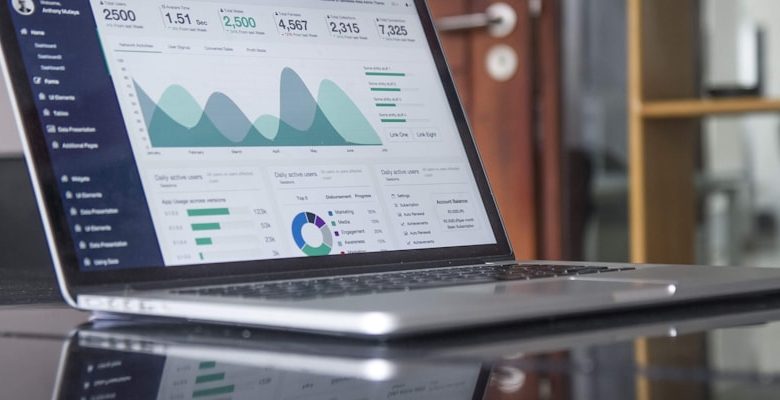How to Use On-Chain Data to Understand Token Dynamics

- Introduction to On-Chain Data and Token Dynamics
- Analyzing Token Circulation through On-Chain Data
- Identifying Token Holders Behavior with On-Chain Data
- Using On-Chain Data to Predict Token Price Movements
- The Role of On-Chain Data in Token Governance
- Challenges and Limitations of Using On-Chain Data for Token Analysis
Introduction to On-Chain Data and Token Dynamics
Understanding on-chain data and token dynamics is crucial for anyone involved in the world of cryptocurrencies. On-chain data refers to all the information that is recorded on a blockchain, such as transactions, wallet addresses, and token balances. By analyzing this data, investors and analysts can gain valuable insights into how a particular token is being used and traded.
Token dynamics, on the other hand, refer to the various factors that influence the value and performance of a token. These factors can include supply and demand, market sentiment, and the overall utility of the token. By understanding these dynamics, investors can make more informed decisions about when to buy, sell, or hold a particular token.
By combining on-chain data analysis with an understanding of token dynamics, investors can develop a more comprehensive view of the cryptocurrency market. This can help them identify trends, predict price movements, and ultimately, make more profitable investment decisions.
Analyzing Token Circulation through On-Chain Data
Analyzing token circulation through on-chain data can provide valuable insights into the dynamics of a token’s ecosystem. By examining the movement of tokens on the blockchain, analysts can gain a better understanding of how tokens are being transferred between different addresses and wallets. This data can reveal patterns in token circulation, such as which addresses are most active or which wallets are holding the largest amounts of tokens.
One way to analyze token circulation is to track the flow of tokens between different addresses over time. By looking at the transaction history of a token, analysts can see how tokens are moving through the ecosystem and identify any trends or anomalies. This can help to identify potential market manipulation or other suspicious activities that may be affecting token circulation.
Another important aspect of analyzing token circulation is to examine the distribution of tokens among different addresses. By looking at the distribution of tokens, analysts can determine how evenly tokens are spread out among holders or if there are any large concentrations of tokens in a few addresses. This information can provide insights into the level of decentralization of a token ecosystem and help to assess the potential risks associated with large token holders.
Overall, analyzing token circulation through on-chain data is a crucial tool for understanding the dynamics of a token ecosystem. By examining the movement and distribution of tokens on the blockchain, analysts can gain valuable insights into how tokens are being used, traded, and held within a particular ecosystem. This information can help to inform investment decisions, assess the health of a token ecosystem, and identify any potential risks or opportunities for growth.
Identifying Token Holders Behavior with On-Chain Data
One of the key benefits of using on-chain data is the ability to identify token holders behavior. By analyzing the transactions recorded on the blockchain, we can gain valuable insights into how token holders are interacting with a particular token. This information can help us understand if token holders are actively trading the token, holding it long-term, or using it for specific purposes such as voting or governance.
By looking at the frequency and volume of transactions, we can determine whether token holders are actively buying and selling the token. This can give us an indication of the level of interest in the token and the overall trading activity surrounding it. Additionally, we can analyze the wallet addresses of token holders to see if there are any patterns or clusters that indicate certain groups of holders are behaving in a similar way.
Furthermore, on-chain data can also provide insights into how token holders are using the token. For example, we can track transactions related to voting on proposals or participating in governance decisions. This can help us understand the level of engagement and participation among token holders in the governance process.
Overall, by leveraging on-chain data, we can gain a better understanding of the dynamics of a token and the behavior of its holders. This information can be invaluable for making informed decisions about the token and its ecosystem.
Using On-Chain Data to Predict Token Price Movements
On-chain data can be a valuable resource for predicting token price movements in the cryptocurrency market. By analyzing data directly from the blockchain, investors and traders can gain insights into the dynamics of a token and make more informed decisions.
One key metric to consider when using on-chain data is the number of active addresses. This metric provides information about the level of token holder activity, which can be a strong indicator of potential price movements. An increase in the number of active addresses may suggest growing interest in the token, which could lead to a price increase.
Another important metric to analyze is the transaction volume. High transaction volume can indicate increased trading activity and liquidity, which may contribute to price volatility. By monitoring transaction volume trends, investors can anticipate potential price fluctuations and adjust their trading strategies accordingly.
Additionally, tracking the token’s token velocity can provide valuable insights into how quickly the token is changing hands within the network. A high token velocity may suggest that the token is being actively traded, while a low token velocity could indicate that holders are holding onto their tokens. Understanding token velocity can help investors gauge market sentiment and predict future price movements.
In conclusion, leveraging on-chain data to predict token price movements can give investors a competitive edge in the cryptocurrency market. By analyzing metrics such as active addresses, transaction volume, and token velocity, investors can make more informed decisions and potentially increase their profits.
The Role of On-Chain Data in Token Governance
On-chain data plays a crucial role in token governance by providing transparent and immutable information about the activities within a blockchain network. This data can help token holders make informed decisions about voting on proposals, changes to the protocol, or other governance mechanisms. By analyzing on-chain data, stakeholders can track the distribution of tokens, monitor voting patterns, and assess the overall health of the network.
Challenges and Limitations of Using On-Chain Data for Token Analysis
There are several challenges and limitations when it comes to using on-chain data for token analysis. One of the main issues is the lack of standardization in data formats and definitions across different blockchains. This can make it difficult to compare and analyze data accurately.
Another challenge is the potential for data inaccuracies or manipulation. Since on-chain data is publicly available, there is a risk that bad actors could attempt to manipulate the data to their advantage. This can lead to misleading conclusions and analysis.
Additionally, the sheer volume of on-chain data available can be overwhelming. Without the proper tools and expertise, it can be challenging to sift through the data and extract meaningful insights. This can hinder the ability to make informed decisions based on the data.
Furthermore, on-chain data only provides a partial view of token dynamics. While it can offer valuable insights into transaction volumes, wallet balances, and other metrics, it does not capture the full picture of a token’s ecosystem. Factors such as market sentiment, regulatory developments, and external events can also impact token dynamics but are not reflected in on-chain data.
Despite these challenges and limitations, on-chain data remains a powerful tool for understanding token dynamics. By being aware of these limitations and taking them into account when analyzing data, researchers and analysts can still derive valuable insights from on-chain data to inform their decision-making process.



